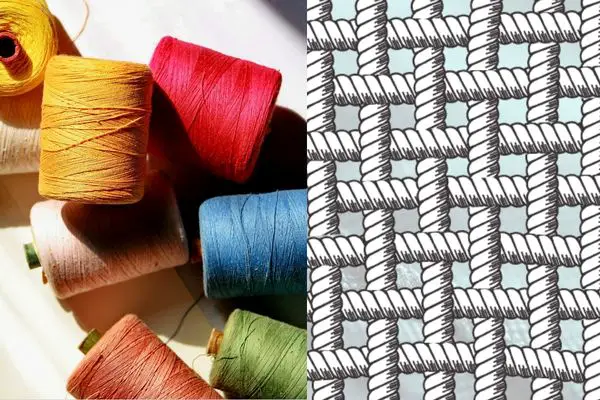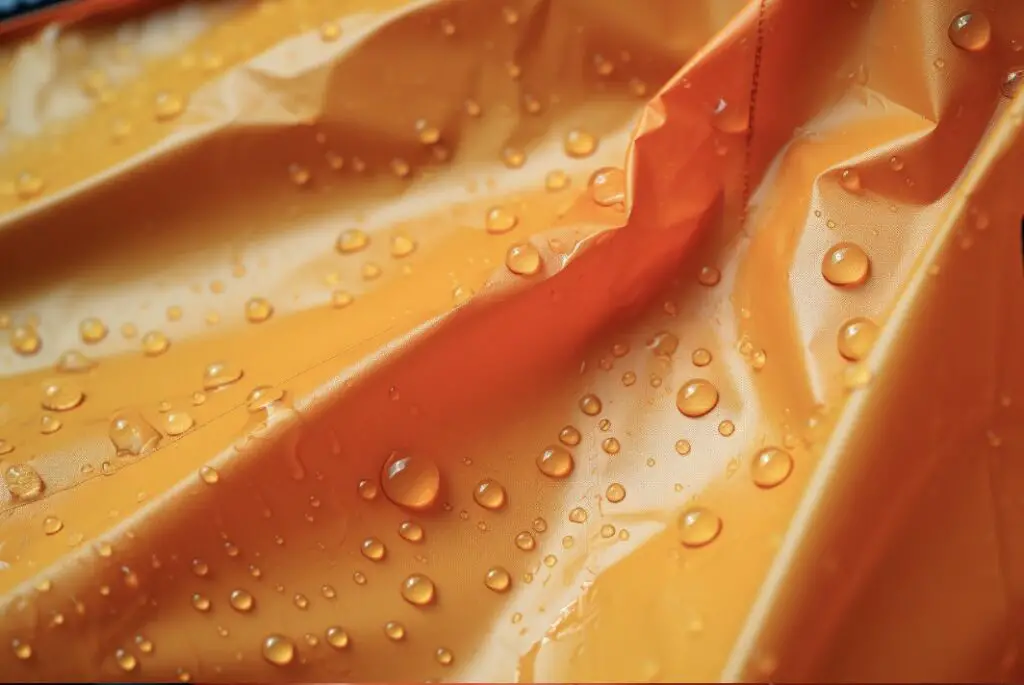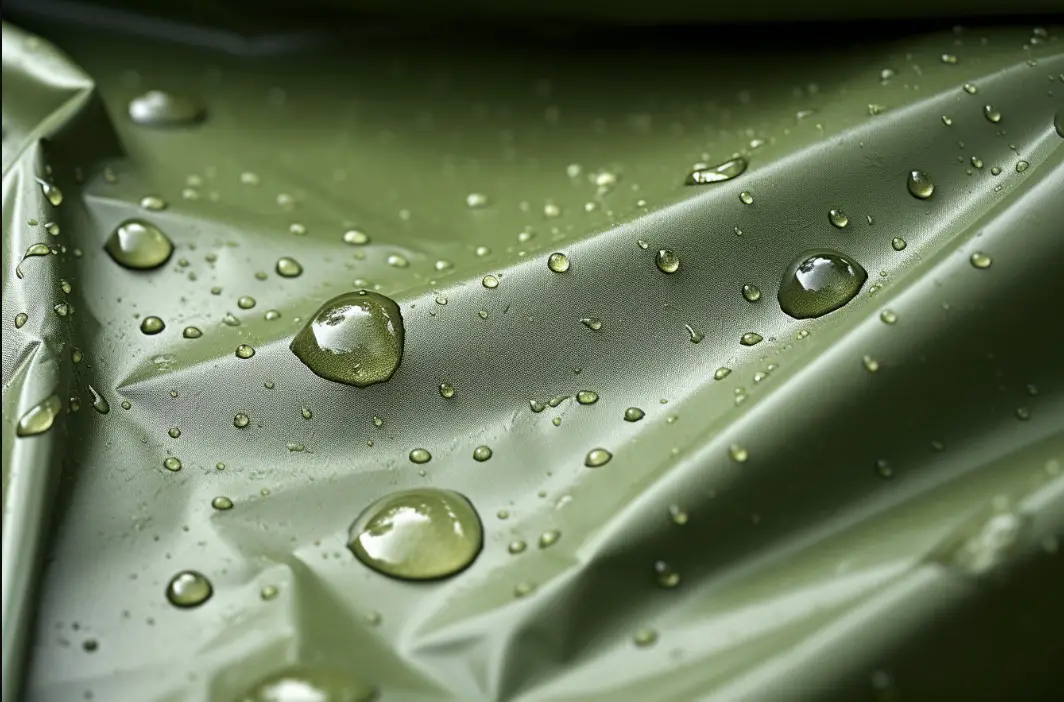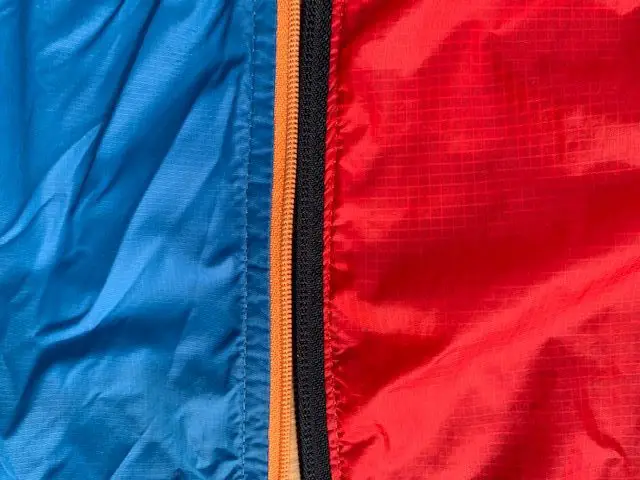Having spent countless nights beneath the stars and braving various weather conditions, one question has always lingered in the minds of many outdoor enthusiasts and camping aficionados: “Is 190t polyester waterproof?” As an outdoor expert with personal experience, I’m here to break it down for you.
Yes, 190t polyester can be waterproof, but its ability to repel water heavily depends on the surface treatment. When treated with waterproof coatings like silicone or PU, it can achieve a water column of around 2000mm. Without these treatments, its waterproofing capability is much less.
The 190T Polyester Lowdown
When you first come across the term “190t polyester,” it might seem a bit confusing. In essence, the “190t” describes the thread count of the polyester fabric. The higher the thread count, the denser the weave. Now, a dense weave does offer some level of water resistance, but to truly achieve waterproof capabilities, it’s all about the coating.

Tents and jackets are one of the primary applications of 190t polyester. Their lightweight nature, combined with the potential for high waterproof ratings, makes them an ideal choice.
From summer festivals to high-altitude treks, the right treatment of 190t polyester can be the difference between a cozy night and a waterlogged morning.
What does “D” and “T” mean and how does it affect waterproofing?
The “D” and “T” in the context of fabrics, particularly those used for tents and outdoor gear, stand for “Denier” and “Thread count,” respectively. Both of these are important measurements that can affect the fabric’s properties, including durability, weight, and to an extent, waterproofing.
1. Denier (D)
Denier is a unit of measurement used to define the thickness or density of individual threads or fibers in fabric. It measures the mass in grams per 9,000 meters of the thread. So, when you see a fabric described as “70D,” for instance, it means that 9,000 meters of that thread weighs 70 grams.
How it affects waterproofing and other properties:
- Durability: A higher denier indicates a thicker, sturdier fabric, which is generally more durable and resistant to wear and tear.
- Weight: Thicker threads (higher denier) will usually result in heavier fabric weight.
- Waterproofing: While denier itself doesn’t determine waterproofness, thicker fabrics (with a higher denier) can be more resistant to water penetration due to their structure. However, for true waterproof capabilities, coatings and treatments (like PU or silicone) are essential.
2. Thread Count (T)
Thread count (often indicated by the “T” symbol) refers to the number of horizontal and vertical threads in one square inch of fabric. In the case of “190T” polyester, this means there are 190 threads per square inch.

How it affects waterproofing and other properties:
- Density: A higher thread count usually results in a denser weave. A denser weave can offer better protection against elements like wind and water.
- Feel and Softness: Fabrics with a higher thread count often feel smoother and softer to the touch.
- Waterproofing: Similar to denier, a higher thread count (denser weave) might offer more inherent water resistance. However, the primary determinant of waterproofing remains the coatings and treatments applied to the fabric.
In summary, while both “D” and “T” play roles in determining the properties of a fabric, neither directly dictates the waterproof capabilities of the material. Instead, they influence factors like durability, weight, and inherent water resistance, all of which can be crucial for outdoor applications. But when it comes to making a fabric truly waterproof, external treatments and coatings are key.
The Role of Waterproof Coatings
There are a couple of primary coatings used to make 190t polyester waterproof:
- Silicone: Often favored for its ability to make fabrics extremely water-resistant. Not only does it enhance the waterproof capabilities, but it also provides UV resistance and increases the fabric’s lifespan. Having used silicone-treated tents myself during rainstorms, I can attest to its impressive ability to keep the interior dry.
- PU (Polyurethane): PU coatings are known for their flexibility and versatility. When applied to 190t polyester, they offer a good balance between water resistance and breathability. It’s particularly beneficial for areas where condensation might be an issue.

There are other coatings in the market as well, such as Teflon and PVC, but silicone and PU dominate when it comes to tents.
Untreated vs. Treated 190t Polyester
While the untreated 190t polyester fabric may offer some basic water resistance due to its weave, it’s nowhere near the standard set by treated materials. Without the crucial waterproof coatings, you’re essentially relying on the weave alone. In my early camping days, I remember using an untreated tent during a light drizzle, and the experience was… let’s just say, damp.
What are some good 190T polyester tents?
A tent made from 190T polyester is a good option for those concerned with weight but do not want to compromise durability too much.
I wrote a comparison between the two similar fabrics of 20D nylon and 210T polyester, most of the points also counts for the slightly thinner 190T polyester.
Above are two examples of good budget tents made from 190T polyester. The one to the left is the Lunar Solo Tent that I have reviewed here.
If you’re interested in truly lightweight tents, you should look to nylon and I have collected my best options in this post about lightweight budget tents!
How Does 190T Polyester Compare To Other Fabrics?
190T polyester is commonly used for tents, rain gear, and other outdoor equipment, often due to its balance of affordability, weight, and adaptability to treatments that enhance its properties.
When it comes to water resistance, understanding how 190T polyester stacks up against other fabrics is important for making informed decisions for specific use cases.
1. 190T Polyester
As previously mentioned, the “T” stands for thread count, indicating that 190T polyester has 190 threads per square inch. By itself, the fabric offers some level of water resistance due to its weave. However:
- With treatments: When treated with coatings like silicone or PU (polyurethane), its water resistance can be significantly enhanced. Such treatments can boost its water column rating to around 2000mm or even higher.
- Without treatments: The inherent water resistance is moderate, and it would not be suitable for heavy rainfall without additional treatments.
2. Higher Denier Polyester (e.g., 600D or 1000D)
Higher denier polyester fabrics are thicker and more robust than 190T polyester.
- Water resistance: Due to its thicker fibers and often tighter weave, higher denier polyester can offer better inherent water resistance. However, like its 190T counterpart, it benefits greatly from additional waterproof coatings.
3. Nylon
Nylon is another synthetic fabric often used in outdoor gear. It’s lightweight and strong for its weight.
- Water resistance: Untreated nylon tends to absorb more water than untreated polyester, causing it to sag when wet. However, when treated with similar coatings like silicone or PU, it becomes highly water-resistant.
4. Cotton (like Canvas)
Cotton, especially in the form of heavy canvas, has been used historically for tents and outdoor gear.
- Water resistance: Cotton fibers swell when wet, closing gaps in the weave and making the fabric more water-resistant. However, prolonged exposure to moisture can lead to water seeping through and can also cause the material to rot over time.
5. Poly-Cotton Blend
A blend of polyester and cotton can offer a balance of the strengths of both materials.
- Water resistance: Like cotton, the cotton component swells when wet, enhancing water resistance. The polyester component helps the fabric dry more quickly and adds durability.
6. Ripstop Fabrics
Ripstop variants can be found in both nylon and polyester. They have a unique weave pattern with thicker threads interwoven at intervals to prevent tears from expanding.
- Water resistance: Ripstop fabrics’ water resistance depends more on their coatings than on the ripstop weave itself. However, they tend to be more durable, especially when facing abrasion or puncture.
Conclusion
190T polyester, especially when treated, offers good water resistance suitable for many outdoor applications. However, its performance is shaped by the coatings and treatments applied to it.
When selecting a fabric for specific water-resistant needs, consider factors like intended use, expected weather conditions, and the importance of other properties like durability, weight, and breathability.
Each fabric type, whether it’s a different polyester variant, nylon, cotton, or a blend, brings its own set of strengths and trade-offs to the table.
Conclusion
When it comes to 190t polyester and its waterproofing capabilities, it’s clear that while the fabric’s inherent properties play a role, the coatings are the true heroes. Whether it’s silicone, PU, or another treatment, the right choice can make your outdoor adventure a dry and comfortable one.
Quick Facts:
- 190t refers to the thread count of the polyester fabric.
- Silicone and PU are primary coatings for waterproofing.
- The water column for treated 190t polyester can be around 2000mm.
- Untreated 190t polyester offers limited water resistance.
- Tents are a common application for this material.
- Higher thread count often means a denser weave.
- Breathability is an added advantage of PU coatings.
- UV resistance is a benefit of silicone coatings.
- Teflon and PVC are less common but still used in some applications.
- The right tent material is key for a comfortable outdoor experience.
In my adventures, I’ve experienced the full spectrum of weather conditions. The tents I’ve trusted the most have been those treated with reliable coatings. There’s nothing quite like the sound of rain pattering on a tent, knowing that you’ll remain dry inside. I’ve tasted the results of both treated and untreated 190t polyester, and trust me, a little treatment goes a long way!
FAQs
Q1: How often should I reapply a DWR (Durable Water Repellent) treatment to my polyester gear?
A: It largely depends on usage and the conditions to which the gear is exposed. However, a general rule is to reapply DWR whenever water stops beading up on the fabric’s surface and starts to soak in. Typically, for frequent users, this could be once a season or after 10-20 uses.
Q2: Can I use regular laundry detergent to clean my waterproofed polyester items?
A: It’s best to avoid standard detergents as they can leave residues that impair the fabric’s water repellency. Instead, opt for specialized cleaners made for waterproof fabrics, as they’re formulated to preserve the fabric’s protective treatments.
Q3: Is it true that heat can help reactivate the waterproof properties of polyester fabric?
A: Yes, gentle heat can sometimes help “reactivate” the DWR treatment on some waterproofed items. Tumble drying on a low heat setting or using a hairdryer can improve water repellency after washing, but always check the care label first.
Q4: What’s the difference between water-resistant and waterproof polyester?
A: While both terms suggest protection from water, water-resistant typically means the fabric can handle light rain or short periods of exposure, whereas waterproof implies a higher level of protection, capable of handling prolonged exposure and heavier rainfalls.
Q5: Are all colors of polyester equally effective in waterproofing?
A: The color itself doesn’t inherently affect waterproofing. However, darker fabrics can sometimes get warmer in the sun, which might affect the lifespan of the waterproof coating. It’s more crucial to focus on the quality of the waterproof treatment than the color of the fabric.





